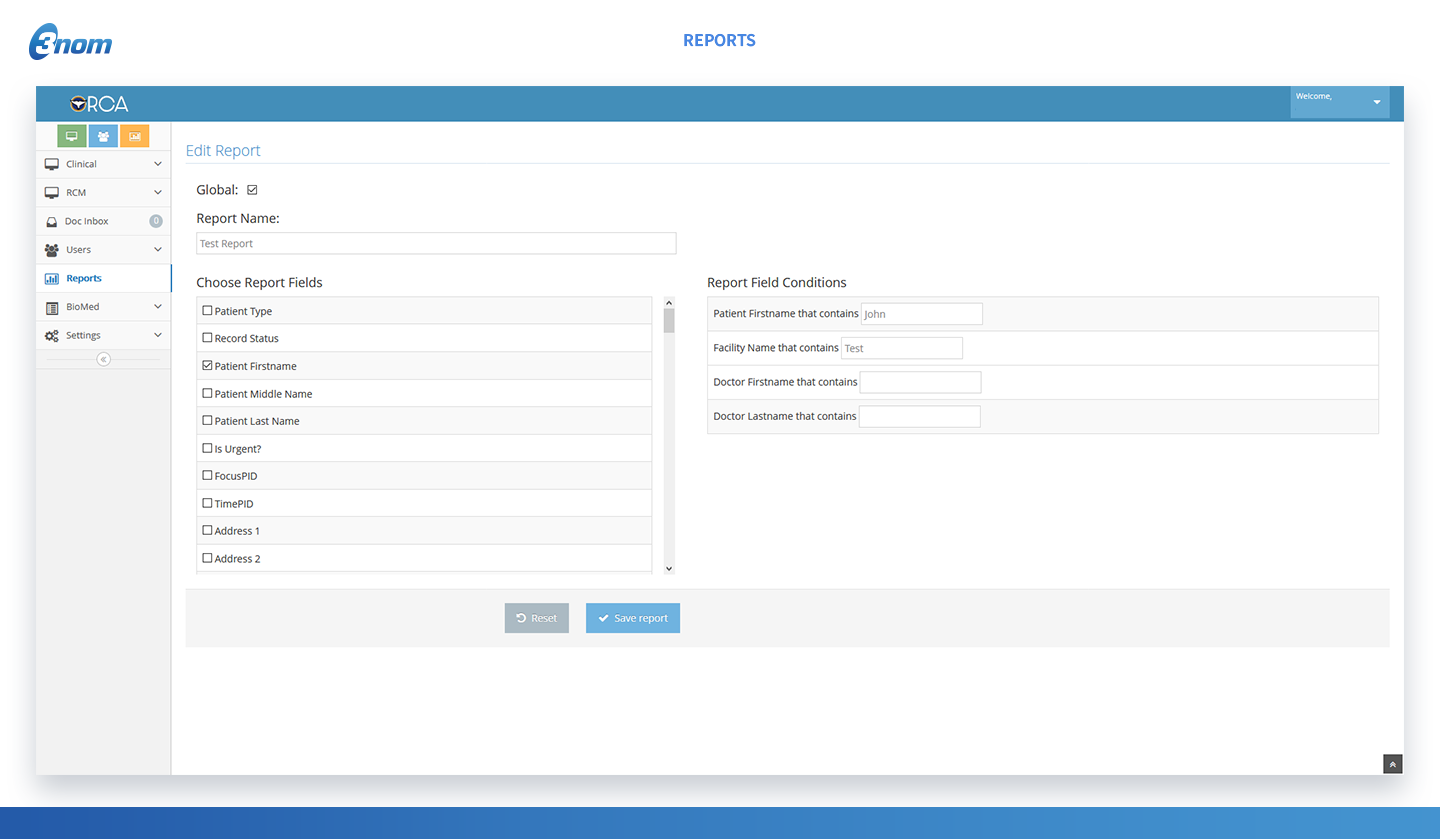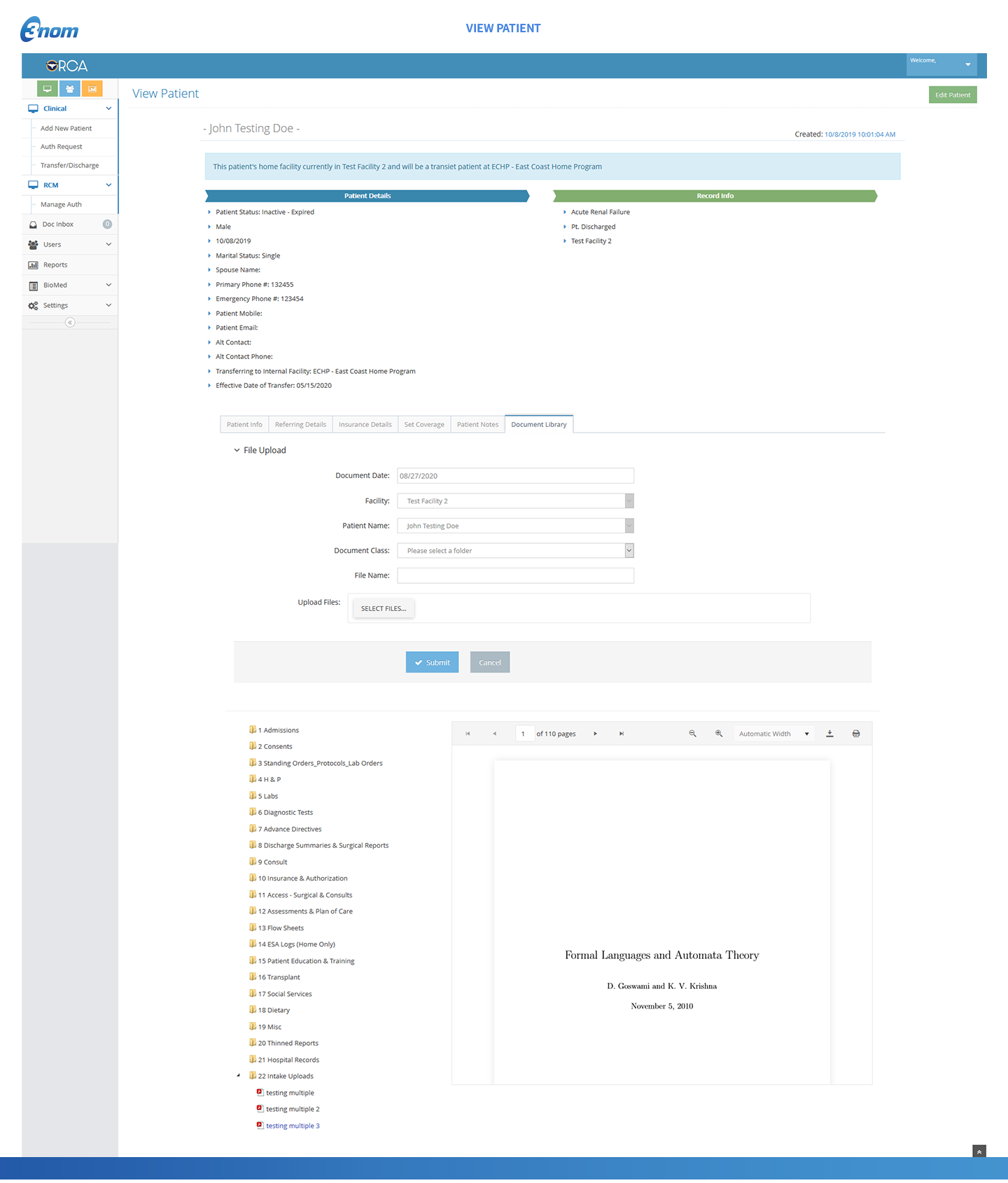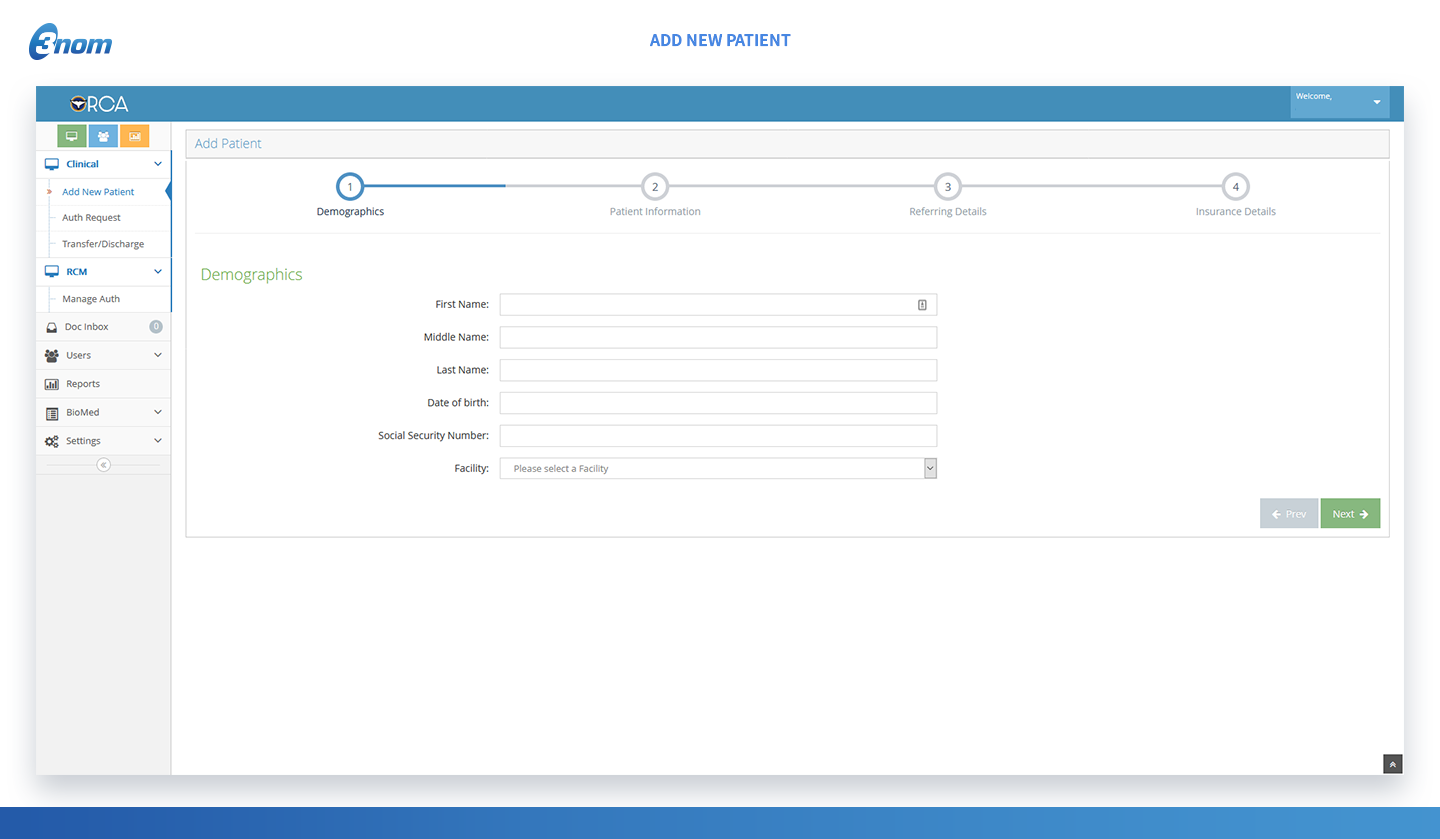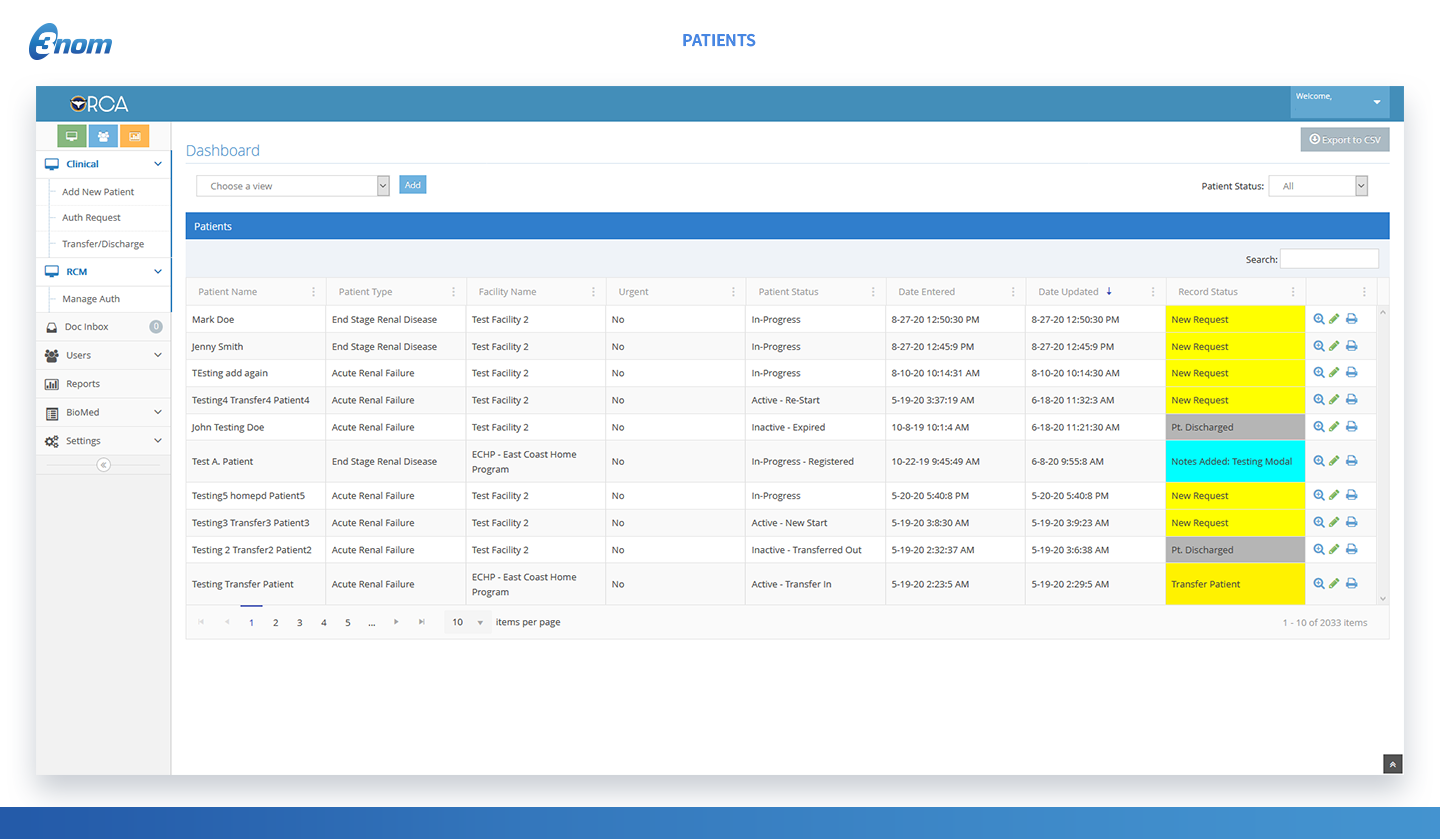WE HAVE A LOT TO SAY
IT SOFTWARE APPS CLOUD NEWS EVENTS
Outsource vs Insource: Pros and Cons
Outsourcing started with back office and admin functions and then gradually spread into other niches like manufacturing, IT, and software development. IT outsourcing is rather popular these days, considering that the global IT market will touch $481.37 billion by 2022, growing at a CAGR of 6.2%.
Although outsourcing is getting popular, insourcing is still what most companies stick to. Insourcing involves the practice of hiring an employee in-house for a specific job role like graphic design, sales, or customer service.
Hiring for IT, however, is a different story. The accelerating pace of digital transformation, fueled by the pandemic, has broadened the areas of IT expertise even a small business requires. These include servers and network maintenance, cloud services, advanced security, web design, business process automation, CRMs and more. In the IT world, a separate specialist would be required for any of these roles, and finding a generalist is not only next to impossible but, if you are lucky, will be prohibitively expensive.
While insourcing, or hiring in-house for a job, has been a standard practice for decades, it is the right time to weigh the pros and cons of insourcing and outsourcing.
Insourcing: Pros and Cons
Insourcing requires companies and organizations to recruit employees on their payroll for the needed job role. Thus, it provides companies with better control over decision-making. Insourcing also enables organizations to get a task done faster and accurately. However, since insourcing requires you to pay your employees irrespective of the workload, the entire process could prove to be expensive.
Insourcing Pros
- Ability to collaborate and work closely with team members.
- New hire’s knowledge of the internal workings of the organization.
- Low cost of management, which will usually be built into the hierarchical structure of your business.
- Easy and seamless communication due to co-location or shared timezones.
- Higher security when working within the company’s networks.
Insourcing Cons
- Higher costs when compared to outsourcing, including the provision of benefits, insurance, and training.
- Limited ability to fill all IT needs within the allotted budget.
- Changing workloads may be insufficient in some months to justify the generally high salaries of in-house IT talent.
- May be hard to hire for and manage effectively if IT is not core to your business.
Outsourcing: Pros and Cons
Outsourcing is the process of working with a freelancer or entering into a contract with a firm to perform a specific function. In the IT world, such a firm is called a Managed Service Provider, or an MSP. When outsourcing a function or project, you are not hiring an employee but only paying a freelancer on a fixed or hourly basis. If you choose to work with an agency, you might have to work with a per-project cost or a retainer.
Outsourcing Pros
- Cost-effective as you get more expertise for less cost with an MSP 100% focused on IT.
- Easily switch focus between different aspects of IT as needed while paying a fixed monthly price.
- 24/7 365 days per year support covering more ground than the in-house 9-5.
- Access to advance cybersecurity tools unavailable off-the-shelf.
- Capacity for centralized patching based on the latest security patch releases.
- Additional benefits of around-the-clock development can be achieved with geographically distributed teams. For example, an MSP who is 3 hours ahead of you can have the update or prototype ready for your approval by the beginning of your day.
- IT guidance and strategy based on best practices from experts.
Outsourcing Cons
- When outsourcing your IT out of the country, also called offshoring, language barriers, cultural differences, and time zone conflicts can pose a challenge.
- Unreliable MSPs can pose a threat to your company’s security.
- Coordinating with an MSP or a freelancer requires more managerial resources.
Outsourcing vs Insourcing: How to Choose
Undoubtedly, outsourcing is here to stay. The ultimate question is not whether to outsource. Instead, start answering the following two questions:
- Which services do you actually want to get managed by a third party? Services that are more suited for insourcing include highly confidential data and the ones that might expose your intellectual property. Additionally, the extent to which you should outsource depends on your staff capacity and composition.
- Which MSP will be right for my business? Look at the years in business, recommendations, successful projects, and clients list. One of the main steps to determining if an MSP is right for you is scheduling a free consultation to determine your needs and get a sense of the provider.
3nom Client Case Study: Physician Dialysis and the ORCA App
3nom and Physician Dialysis (“PD”) have been partners for over four years. What started as basic managed services relationship has evolved into a complete IT partnership where 3nom’s software development and IT consulting team worked with PD to overhaul business processes creating efficiencies and an overall better patient experience. One of the projects, named ORCA, spans multiple departments and connects multiple systems from patient intake to document center, eliminating the gaps and ensuring the smooth flow of information throughout PD’s clinics across five states.
We spoke with Physician Dialysis’s Director of IT & Marketing, Luis Valdes, and the project’s lead engineer, 3nom’s developer Volney Tejeda. We dove deep into the origins, process, and outcomes of the ORCA app — join us and get inspired!
Client
Luis Valdes, Physician Dialysis: “Physicians Dialysis has delivered high-quality dialysis solutions for more than 30 years. As a physician-owned and physician-directed company, we emphasize patient care and strive for clinical excellence. We apply a holistic approach to treatment that includes using the latest technology, recruiting, and training specialized staff, and providing education to engage patients, improve outcomes, and reduce the likelihood of hospitalizations.
With several clinics scattered across several states, we have more requirements for our IT infrastructure than organizations with smaller footprint. We have partnered with 3nom for a few years now to help us manage the infrastructure needed for our Electronic Medical Record (EMR), Revenue Cycle Management (RCM) and Enterprise resource planning (ERP) systems.”
Problem
Volney Tejeda, 3nom: “ORCA started with Physician Dialysis needing to onboard their dialysis patients as they come in, get their insurance information and give their nurses and staff a better way to see this information across clinics for those patients who travel a lot. The company is growing quickly, and their needs and scope are constantly evolving, their needs change. So what started with a form and a table had to evolve into a complex data processing system.”
Luis Valdes, Physician Dialysis: “Our company relies on multiple systems to manage day-to-day operations; from dialysis specific EMR used by the clinical operations team to ERP and RCM systems used by our Accounting and Finance departments. These systems are not off-the shelf, they are customized to fit the unique requirement the dialysis industry demands.
However, even with these major systems in place, there were many gaps with workflows that relied heavily on paper or on a spreadsheet and documents that needed to be sent back and forth.
We needed something to address those gaps, to make our workflows more efficient, ensuring processes don’t fall through the cracks and that everything happens in a timely fashion. Our additional request on a higher level was to integrate all these different systems into a one cohesive IT organization.”
Why 3nom?
Luis Valdes, Physician Dialysis: “We have a longstanding relationship with 3nom as our network management, and we have a strong personal relationship with them too. They work side by side with us to address and solve any issues, and take ownership of finding the solution that is in our best interest. We knew how they work, we knew that they won’t be just a typical vendor but more of a partner to us. So we decided that this time, we will engage them as the app developer for ORCA.”
Collaboration
Luis Valdes, Physician Dialysis: “Most of the requirements and vision for ORCA application were the result of several meetings that we had internally with different departments. We addressed particular workflows that required improvements, found opportunities to be more efficient. This is an ongoing process, as is the development: we look at the destination and the opportunities, and then assess what development is needed to get us there.
Stage 1 of the project was mainly around intake and communication between the clinical team and the RCM team. Now it has expanded to all the departments, and we are pushing upgrades and updates almost every month. We meet with 3nom on a weekly basis and sometimes more often when the project requires closer attention. We continue evaluating and identifying different workflows, adding different pieces to ORCA.”
Volney Tejeda, 3nom: “We like to communicate as much as possible. We have weekly meetings, usually on Fridays, where we go over the progress, get feedback and adjust our deadlines. We have a really great personal relationship with the entire Physician Dialysis team: Luis reaches out whenever he has a question or an idea, and we are always available for him and all our clients.”
Solution
Volney Tejeda, 3nom: “Avrohom (Liberman, the CTO of 3nom) suggested we write ORCA in the new dynamic core framework. At the time, it was brand new and it was very interesting to learn a new technology and implement it in a more robust way than it was ever used before. By the end of the rewrite we had a faster website that was more efficient to maintain. That was the beginning, and since then, we continuously try new things and give ourselves new challenges to solve.
For example, the reporting was interesting. We made reports based on all the information that existed in the patient tables, and the challenge was to make it dynamic to give staff an easy way to pull reports with the exact data they need. We created a dynamic schema and now a user can pick the fields that they need and generate the correct Excel reports. We also changed the database to SQL server because it’s very fast and scalable.
Reports
More recently, we added a document center, a one-stop repository where staff can find all patient’s documents, such as insurance information and doctor’s records. We built the entire document architecture from scratch, making sure that they would be able to access the correct folders through their printers across multiple clinics. Historically, they have used a shared folder where everyone could add files and edit them—this was not safe and not ideal for historical purposes. Then, we added single sign-on with Azure, allowing staff to manage their users internally without having to go through us to add users.
View Patient
Everything we do focuses on their current satisfaction with the existing solution and how much time and effort we can save them with the update. We spend all the time we need on going through the files and organizing the data to make it easier for Physician Dialysis to focus on their patients.”
Challenges
Luis Valdes, Physician Dialysis: “At the core of ORCA was a very basic application we have previously acquired. It was built on PHP, which was not a language that allowed for easy integration or expansion. So, we relied heavily on 3nom and their expertise to upgrade it and develop it to satisfy our requirements.”
Volney Tejeda, 3nom: “We inherited the project built on PHP symfony framework that was old and deprecated. We started working on it back in 2017 but the code base was from 2010-2011 when the first version of the framework was released. So when we received it, we’re just trying to get our bearings, trying to figure out where things were and how to change things. We took up a good amount of time to understand the code base and find the database credentials. We didn’t have access to the previous developer and initially couldn’t find a way to access the database.”
Luis Valdes, Physician Dialysis: “Occasionally we have situations when we require more resources that we normally use. There was a time where we had to multiple lines of work simultaneously, some were prerequisites to the others, and we had hard deadlines for all of them. 3nom didn’t skip a beat and pulled more resources into our system and instead of having just Avrohom, we had another developer added to our project to make sure that we made the bid the deadline. We were able to scale the team when we needed, and scale back when the implementation was shipped successfully.
Another challenge that stems from working in the medical field is the issue around compliance. Right now we are working on addressing different workloads for the technical department to better manage inventory for supplies and equipment. Here, we have to make sure that whatever system we use is HIPAA compliant. This makes it very challenging to use any of the shelf applications out there to keep track of inventory because many of them are not HIPAA compliant. Working with 3nom, we can create an application that fulfills our compliance requirements and provide different departments with a solution that otherwise we have to be paper.”
Outcomes
Volney Tejeda, 3nom: “We started with a very small, simple site and over the years grew into a complex and highly efficient system with many more users and hundreds of patients. From the developer standpoint, It doesn’t happen often when you get to follow a product, maintain, grow and scale it. All those details about maintainability and scalability add up to just a much improved experience for users of ORCA.
Ultimately, the project is successful because it adds value. The nurses use it, the staff use it, it improves the workload and efficiency, saves time. We automated a lot and provided better ways to do things. In software, it’s always a balancing act between the most optimized, the fastest solution and the practicality. We would have loved to spend weeks making an even better database architecture or better document center but obviously that’s not practical because the client operates within the constraints of the time and the budget. So, I see that we really hit this Goldilocks zone between practicality and functionality and the result is very scalable and usable, and when things come up, we’re also available to fix them quickly and continue improving on them. It’s always about the client’s best interest for us.”
Luis Valdes, Physician Dialysis: “The two main outcomes from releasing the ORCA app for us were the saved time and the improved revenue cycle. The time-saving benefit is pretty straightforward: when we identify a particular workflow that is lagging and then design a system to support that workflow that current applications do not support, we save time. The financial benefit stems from us being able to identify a particular patient who needs an insurance verification and process it on time — if we don’t, we lose thousand thousand dollars a month. The new system allows for this type of tracking to ensure that verifications, eligibilities, and the revenue cycle process gets turned over in a timely fashion to avoid any penalties or any lost revenue.”
Add New Patient
Patients
Future
Luis Valdes, Physician Dialysis: “We are viewing this project as ongoing, as I mentioned, we don’t expect it to be completely done, and release different enhancements and expansions almost monthly. We are expecting ORCA to support more and more different departments.
Our longer-term goal would be to supplement our migration into a paperless company. When we think about scheduling and punching in and out, we see opportunities in using business intelligence and artificial intelligence to make scheduling decisions, and also making decisions when it comes to revenue cycle, when a particular patient changes categories or classifications.
As you can see, ORCA is a very spread-out application. It goes from multiple departments and it basically uses the common denominator company-wide, which is the patient, to fill the void that all the applications were unable to fulfill. We see many inefficiencies and issues with compliance on the clinical level, and for Physician Dialysis, we decided to do things the right way from the get-go. We don’t cut corners. Without this application and 3nom as a partner by our side to bring it to life, we wouldn’t have been able to bring that efficiency and compliance into our clinics.”





